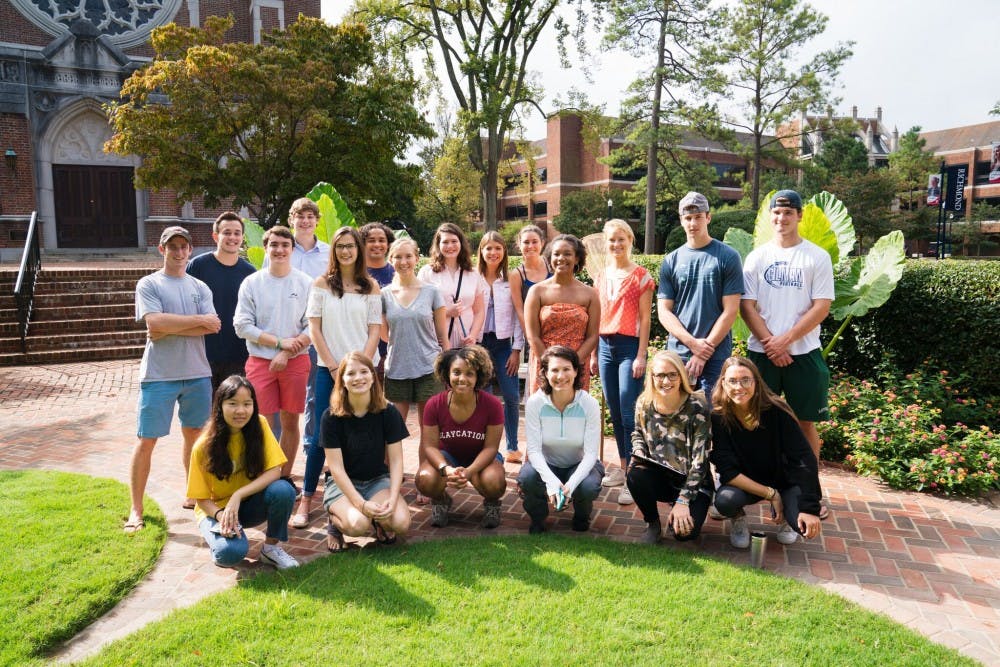Professor Jennifer Sevin’s Introduction to Ecology class raised and released monarch butterflies this semester to help increase the diminishing monarch population.
Junior Zach Harrell is currently in Sevin’s course.
"Every part of the life cycle of a monarch butterfly is so visibly different than another,” Harrell said. “It’s very crazy to see because when you come into class twice a week, the first thing you do is walk by the netted cages that we had the caterpillars growing in, and you could see them changing every day.
"My teacher would be getting ready for class and within 10 minutes, one [of the monarchs] would hatch. It happens so fast, so it’s actually very interesting.”
The students traveled to a nearby elementary school, Mary Munford Elementary, in September to present activities related to monarch butterflies
“I had my ecology students go over to Mary Munford Elementary School right down the road," Sevin said. "Their mascot is actually the monarch. The students presented a series of hands-on activities for the third graders related to pollinators in general, the monarch life cycle and the [monarch] migration, then talked about what we could do for conservation. The students [at Mary Munford Elementary] are growing milkweed plants that we hope to plant in the spring.”
In October, the students returned to release some of the butterflies at the elementary school.
“We taught third grade classes the different functions of why butterflies are important and all that and we did activities with them for like an hour," Harrell said. "It was pretty interesting. Once ours hatched, we went and released them with the kids."
Sophomore Quentin Price was also a part of the Introduction to Ecology course.
“Raising the butterflies was great for the class, as it built a better sense of community among the students,” Price said. “It was a good way for non-science majors to see science in a different way.”
Not only did raising the monarch butterflies engage UR students, it was important for the survival of the species.
"The monarch butterfly of covered a lot of the different topics [covered in the course] and they’ve been proposed for listing on the endangered species act,” Sevin said. “Their populations are decreasing and in some places up to 90% of their populations have decreased over the years, so they definitely need a little bit of help.”
Enjoy what you're reading?
Signup for our newsletter
Before letting the butterflies go, the class put tags on each of the butterflies' wings and submitted the data to the Monarch Watch, an organization whose goal is to “promote protection of monarch habitats throughout North America.”
Sevin said she hoped to permanently incorporate raising butterflies into the Introduction to Ecology course.
“The long-term goal is that we will [raise monarchs in the fall and spring], but we have to build the garden first,” Sevin said. “I’m hoping that it will be a yearly component and that we can raise more [butterflies] and reach out to some of the other schools in the area to build pollinator gardens and things like that.”
Contact features writer Allison Walters at allison.walters@richmond.edu.
Support independent student media
You can make a tax-deductible donation by clicking the button below, which takes you to our secure PayPal account. The page is set up to receive contributions in whatever amount you designate. We look forward to using the money we raise to further our mission of providing honest and accurate information to students, faculty, staff, alumni and others in the general public.
Donate Now



